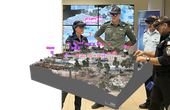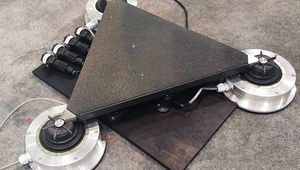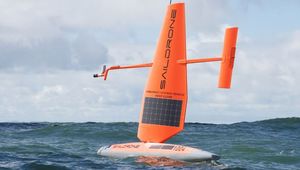Xpider: A DIY 3D-Printable Robot Spider
A 3D printed programmable and self-navigating spider robot that fits inside a palm.
Specifications
| Applications | AR Navigation, Face Recognition |
| Weight | 5.3 |
| Diameter | 3.4 |
| Project Type | Open-source |
| Integrations | Camera, sensors |
| Technology | Intel Curie neural network |
| Control | Remote (joystick or gaming console), smartphone, tablet |
Overview
A Miniature Hexapod with Integrated SmartNodes
Xpider is a miniature robot spider created by Team Roboeve from China. The prototype was developed back in 2015 and went through many modifications till it finally got the right shape. What makes this robot spider more interesting and worth-having is the ease it offers to the tech newbies.
The DIY spider robot has been integrated with SmartNodes that users can leverage for programming. Users can create and customize programs by simply dragging and dropping instructions.
Xpider is powered by Interl Curie neural network, hence can be trained to perform as required. For example, it can learn obstacle avoidance if integrated with a distance sensor and a remote control. It’ll take a few attempts to learn by using its AR navigation features.
Since Xpider is an open source project, users can create their own designs or integrate modules according to their likings.
This robot has been featured on various websites and TV channels, such as BackerClub.co, Wired, Yahoo Tech, Mashable Asia, and many others. A nice thing to have on office tables and study desks, Xpider offers fun and entertainment to refresh the minds.
Xpider as a Play and Fun Robot?
There are different ways to play with Xpider:
Camera Integration
Users can integrate a small camera and control the robot with the help of their smartphones or tablets.
AR Navigation
Xpider has an in-built navigation system allowing the robot to move around the room, table or floor. On top of that, the robot spider features AR technology, making navigation a lot easier and fun.
Easy Programming
Programming the robot shouldn’t be a problem for anyone. Xpider is integrated with SmartNode and users can simply drag’ n drop actions using iPad, laptop or smartphone. With the help of the desired control commands, users can customize their Xpider models with ease.
Training the Robot
This functionality is only available in models supported by Intel Curie neural network module. Otherwise, the Xpider can only be programmed, not trained. An neural network-powered Xpider can be trained if integrated with a remote control and distance sensors. It quickly learns to recognize obstacles and respond in a user-defined manner.
Why Xpider Has So Much Attraction?
Here are some reasons:
Open-source project
As said, Xpider is an open-source project, allowing everyone to design their unique robots. Users are free to choose the shape and size of their robot, and can 3D print it later.
3D Printable Components
3D-printing of Xpider components is quite cost-effective as home-based 3D printers can do the job.
Guides
Assembling guides and other useful information regarding integrations is also available on SmartNodes, helping students and robot enthusiasts to create their own models with ease.
Customizable
Users can opt to paint the white casing with their favorite color or customize the robot with new accessories. Xpider offers a lot of room for experimentation, exploration, and learning.
References
Tags
3D PrintingAugmented Reality (AR)Hexapodsneural networkrobotics








